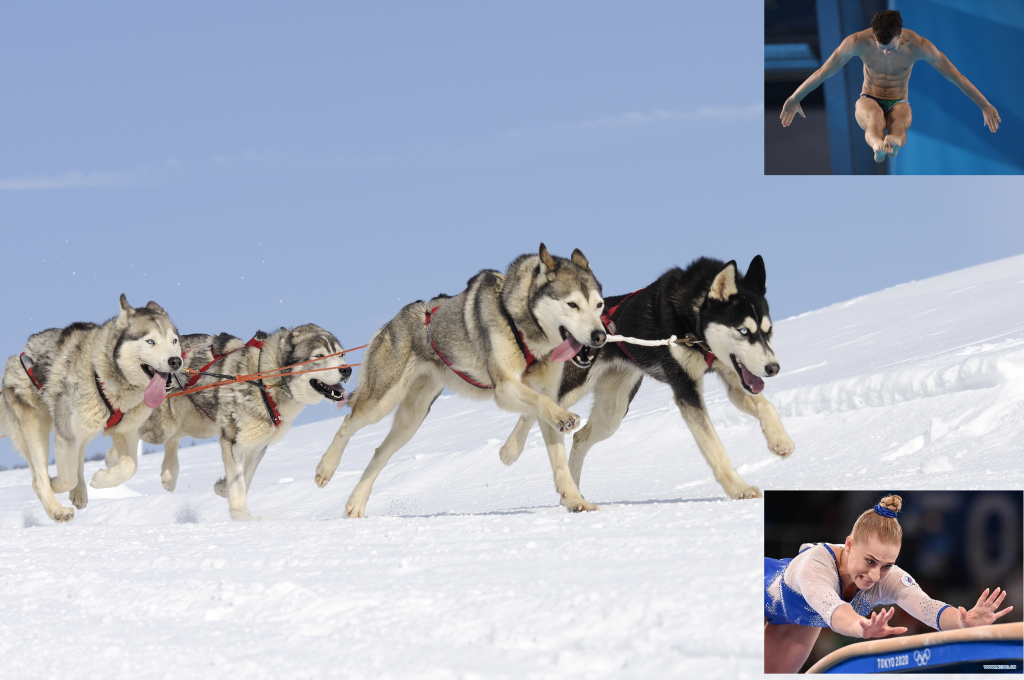Degree of difficulty…

Watching the Olympics over the past few weeks got me thinking about dogs and how we approach training them, or trying to change their behaviour. Let me explain.
If we consider two Olympic disciplines – diving and gymnastics. Competitors choose a level of difficulty for a vault or a dive for instance. Their resulting scores reflect their performance in relation the the degree of difficulty they faced. Of course, the judges take into consideration the level of difficulty and score accordingly. So, why is this relevant to our dogs?
Many dog trainers or behaviourists offer pretty standard packages as a one fit solution for our dogs. I would suggest this has it’s difficulties. One size, rarely fits all. We should be looking at our dogs as firstly, animals, then dogs and, finally as breeds. When we do this it becomes clear, to me, that we need to be flexible in our approach to helping our dogs, either through training or dealing with behavioural issues. My current charge illustrates my point.
Clint, he came to us with no name and just a number. So the dog with no name became Clint. Fans of spaghetti westerns will get the joke. He is a Lurcher (basically, a Greyhound Cross). These dogs have for centuries been bred for hunting, particularly hare coursing. Similar, in this respect, to Greyhounds, hunters originally but, now trained for racing and chasing fast moving furry objects (the hare). Many of these dogs are, eventually, re-homed when they are no longer of use as money earners for the racing fraternity.
Because of the worries about prey drive in these dogs, they are commonly muzzled and restricted to a life on a long lead. In my opinion, an appalling fate for such an athletic and joyous dog. So why do owners do this? It is because they are convinced these dogs cannot be trained. My own vet when checking my fella out said he should never be allowed of the lead. As a behaviourist I have to disagree. Nearly, all dogs, although there are exceptions, are trainable and capable of learning new behaviours and skills. Greyhounds and Lurchers need not be doomed to a life on the lead.
They key point here is understanding a breed and its’ history. Yes, Greyhounds and Lurchers will possess a prey drive, inherited from centuries of breeding. However, this can be managed and tempered. Clint, for instance, in a few short weeks has learnt the recall, something we constantly work on. He comes to my voice, signal and the whistle. He comes from being deep in the woods after chasing a squirrel. How is this possible? Understanding the dogs’ nature is of paramount importance.
Clint is never of lead without his muzzle, this is more for his safety and prevents him from making a mistake. He is allowed to meet other dogs off lead and to play with them if the situation allows. I take care to monitor each encounter very carefully. If, as it sometimes does, Clint’s behaviour and body language leans towards prey like behaviour, he is back on the lead. Obviously, when we are approaching smaller dogs, he is on lead and is allowed to meet them in a controlled manner. In the short time Clint has been with us he has met many puppies, small dogs, large dogs. You get the picture. Each interaction is managed and Clint is making fantastic progress. The joy of seeing an athlete like Clint in full flow running on the beach is a wonder to behold.
So back to my point about degree of difficulty. If we consider Clint’s breed we would not let him off lead. However, understanding the challenges and ‘the degree of difficulty’ faced by a dog such as Clint we can adopt a different approach. By protecting him with a muzzle and investing time and effort into him he can live a full and enjoyable life, mainly running free. Same size does not fit all.
